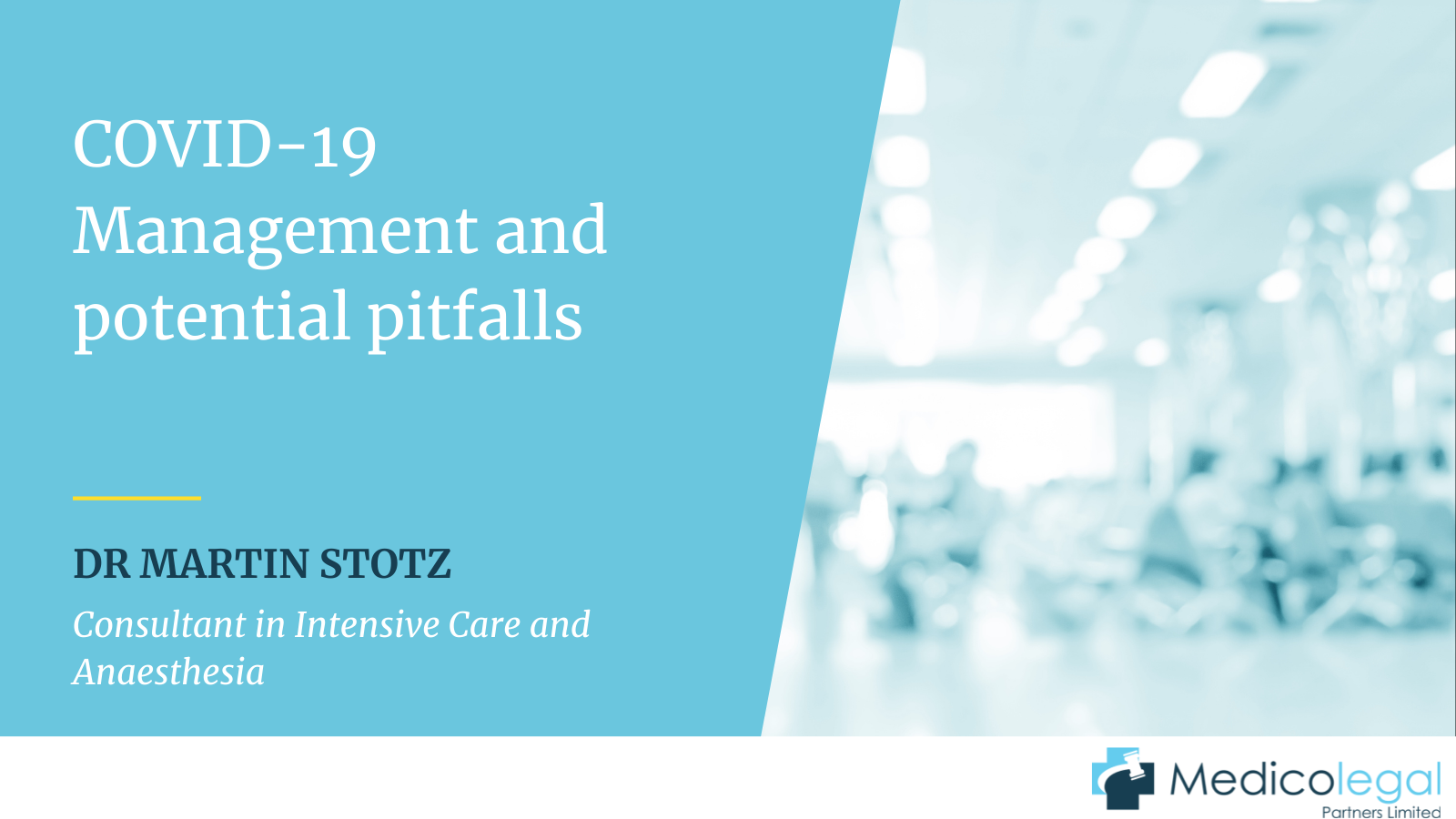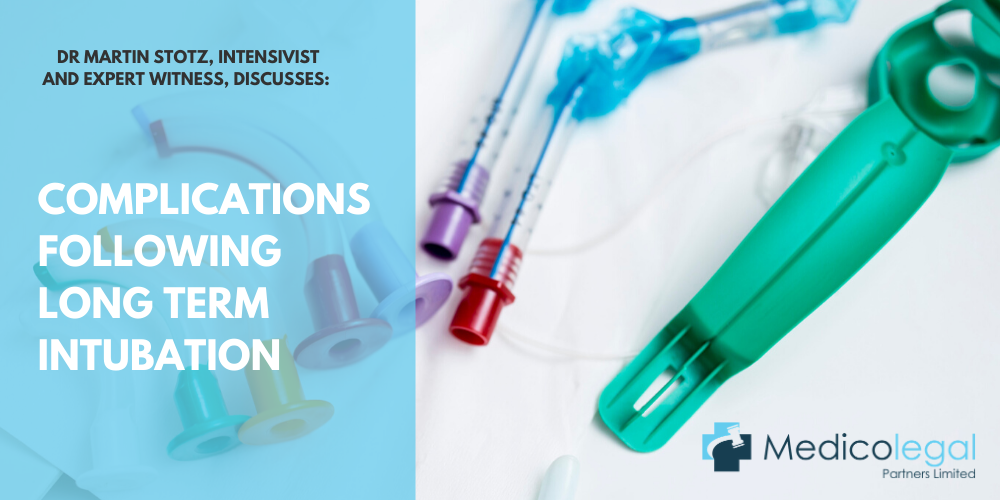COVID 19 – Management and Potential Pitfalls

COVID-19 is caused by the highly contagious SARS-CoV-2 virus, which emerged in China in late 2019. It has since spread around the globe, becoming a major public health issue which has had a severe effect on health care provision in many countries. COVID-19 primarily affects the lower respiratory tract (COVID pneumonitis) and the initial symptoms of the disease are persistent cough, fever and loss of taste and smell. The severity of the disease varies widely. Many patients are asymptomatic or only mildly affected. However, in around 20% of cases, patients develop severe and life-threatening symptoms, and COVID-19 is fatal in around 3% of those with a confirmed infection. Although the risk of severe disease or death is increased in older patients, smokers and those with pre-existing illnesses, such as hypertension, heart or kidney disease and diabetes, younger patients with no pre-existing conditions have also been similarly affected, and the reasons for this are unclear. Effective treatments for this novel virus are still being developed.
For patients with mild symptoms, the usual treatment is supportive care at home. This may consist of simple remedies for cough, such as honey or codeine-containing linctus. However, these latter medicines have the potential to become addictive, so their use should be limited to a short prescription only. Cough suppressants should be avoided in patients with bronchitis as they lead to sputum retention. Fever can be treated with ibuprofen or paracetamol and patients should be encouraged to keep their fluid intake higher than usual. If a patient complains of breathlessness, it is important to identify and treat other causes, such as pulmonary oedema or embolism, COPD and asthma. If severity increases, oxygen therapy can be trialled, either at home or in hospital, where hypoxia is the likely cause.
Even with these measures, the condition of patients with COVID-19 can deteriorate rapidly and admission to hospital may be necessary. Chest CT scans should be taken early to trace the progression of the infection. COVID pneumonitis leads to typical radiological changes on these scans, but it can still be difficult to interpret as the imaging pattern produced by COVID-19 infection is non-specific. It is therefore important to rule out the possibility that radiological changes have been caused by another infectious agent. Once symptoms have worsened and respiratory function is declining, the main drug treatment consist of dexamethasone, remdesivir and interleukin inhibitors (such as ticilizumab). It has been shown that if administered too early, and for only mild disease, these drugs can actually suppress the body’s immune system, thus increasing the viral load and increasing the chances of severe disease developing, thus not being beneficial. But the most important factor for severe cases remains supportive respiratory care delivered on either a specialised respiratory unit or Intensive Care Unit.
Atypical presentations of COVID-19 are common. In particular, older patients and those with underlying disease may develop fever and respiratory symptoms much later in the course of their disease than younger people and those without comorbidities. Many patients also exhibit symptoms involving the skin, such as rashes, discoloured lesions on the extremities and hives. In some cases, the link to COVID-19 may be missed, as these symptoms resemble those of several other conditions. Furthermore, some of the treatments for COVID-19 may produce skin-related side effects.
The most common complications of COVID-19 itself include superimposed bacterial or fungal pneumonia, respiratory failure, sepsis, cardiomyopathy or arrhythmias and acute kidney injury. SARS-CoV-2 has also been shown to affect the coagulation system and patients also have an increased risk of thrombosis, particularly deep vein thrombosis and pulmonary embolism. As elevated D-dimer levels are particularly strongly associated with mortality, these should be closely monitored in patients at risk of hypercoagulability. Finally, patients who spend a prolonged period in hospital may suffer related complications, such as secondary infections, thromboembolism and polyneuropathy and myopathy resulting in profound muscular weakness.
In most patients, the symptoms of COVID-19 resolve within 4 weeks. However, a significant minority of patients report that symptoms are still present after 12 weeks, or even longer, in a condition now commonly called long COVID. It is important to remember that not all patients will demonstrate the most commonly reported ongoing symptoms after acute infection, but this does not necessarily mean that a diagnosis of long COVID should be discounted. Similarly, the absence of a positive test for COVID-19 should not preclude a patient from receiving additional investigation or treatment of chronic symptoms.
The COVID-19 pandemic has placed great strain on available health resources. This pressure on services has meant that it has sometimes been necessary to depart from established procedures in the care of patients. Furthermore, some healthcare providers have been asked to work outside of their usual field of practice or in different locations. However, this does not mean that staff should be expected to carry out any activities that are beyond their level of competence. It is also important that those working outside their usual clinical area receive appropriate induction and supervision. Insufficient resources may mean that doctors have to make triage decisions about who receives treatment and who does not. In these circumstances, the guiding principle should be to use the resources available to ensure the greatest medical benefit for the largest number of patients. Therefore, access to intensive care may depend on the patient’s condition, previous response to treatment, but should not be decided upon solely on the basis of age or medical history.
While doctors working under these conditions may be fearful of a potential claim for negligence, in reality this is very unlikely to occur. The COVID-19 pandemic represents a unique challenge and this will almost certainly be taken into account by the courts.
The current best global, national and local healthcare strategy to fight the COVID pandemic is, and will remain, a widespread immunisation of the general population. It is therefore essential to continue to reach out and promote SARS-CoV-2 vaccination, which is efficient and safe.
About Dr Stotz
Dr Stotz is a Consultant in Intensive Care and Anaesthesia at St Mary’s Hospital in London, where he leads a multi-disciplinary team. St Mary’s Hospital, as part of Imperial College NHS Trust, is a major trauma centre and a tertiary vascular referral centre. Dr Stotz is also an expert witness in Anaesthetics and Intensive Care Medicine and can provide expert opinion on a range of cases relating to most aspects of anaesthesia, the care and management of patients pre, during and post operatively, and the clinical management of critically ill patients for both claimant and defendant.
For the past 18 months Dr Stotz has been working within Intensive Care treating patients with COVID-19. He has a thorough knowledge of the treatment options and guidelines that were developed and distributed by the NHS as the medical community’s knowledge of the virus progressed.
Further reading:
You might also be interested in reading Dr Jenner, Consultant in Pain Medicine’s recent article on the link between long Covid and Chronic Fatigue Syndrome. Read the article here.
https://www.cdc.gov/coronavirus/2019-ncov/hcp/clinical-guidance-management-patients.html [Accessed 26th May 2021]
https://www.nice.org.uk/guidance/ng191/resources/covid19-rapid-guideline-managing-covid19-pdf-51035553326[Accessed 26th May 2021]




